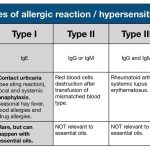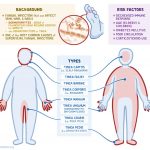
Contents
Red Yeast Rice
Red yeast rice is a dietary supplement made by fermenting the yeast Monascus purpureus on rice. Red yeast rice has been used in China and other Asian countries for centuries as food and as a medicine to lower blood cholesterol levels, improve blood circulation, and aid digestion. Lowering blood cholesterol levels reduces the risk of cardiovascular diseases.
The fermentation of rice with M. purpureus enriches it with bioactive substances, including monacolin K, a natural chemical similar to lovastatin, a cholesterol-lowering prescription drug. Monacolin K reduces cholesterol levels by inhibiting HMG-CoA reductase, an enzyme involved in cholesterol synthesis. Red yeast rice also contains isoflavones, monounsaturated fatty acids, and sterols, which may have cholesterol-lowering effects.
While traditional red yeast rice may contain minimal amounts of monacolin K, commercial products vary widely in their monacolin K content. Some products even contain illegal additions of lovastatin, leading to FDA warnings and requests for withdrawal. Moreover, certain red yeast rice products may be contaminated with citrinin, a toxic substance that can harm the kidneys.
Warnings
- Avoid red yeast rice if you are allergic to molds or any of the product’s ingredients.
- Do not take red yeast rice if you have liver disease, impaired liver function, abnormal liver function tests, kidney disease, musculoskeletal disorders, thyroid problems, a high risk for cancer, a serious infection, or have had an organ transplant.
Side Effects
Common side effects of red yeast rice include nausea, diarrhea, stomach pain, gas, heartburn, gastritis, dizziness, muscle pain and weakness, muscle damage, increased creatine phosphokinase, liver damage, and elevated liver enzyme levels. Seek immediate medical attention if you experience serious heart symptoms, severe headache and other nervous system reactions, or serious eye symptoms.
QUESTION
Dosages of Red Yeast Rice
The appropriate dosage of red yeast rice is not yet well-defined. For hypercholesterolemia, a suggested dosage is 1200 mg orally twice daily, taken with food. Overdosing on red yeast rice can cause gastrointestinal discomfort, as well as kidney, muscle, and liver damage. Overdose treatment involves discontinuation of the supplement and necessary symptomatic and supportive care.
Drug Interactions
Inform your doctor about all medications you are taking to prevent potential interactions. Severe interactions with red yeast rice include atorvastatin, o s aconazol, lovastatin, pitavastatin, pravastatin, rosuvastatin, and simvastatin, as well as atazanavir, chloramphenicol, cyclosporine, itraconazole, ketoconazole, levoketoconazole, lopinavir, metoclopramide, and quinidine. Other interactions involve ritonavir, tipranavir, grapefruit, lanthanum carbonate, maraviroc, and St. John’s wort. Always consult your healthcare provider before making any changes to your medication regimen.
Pregnancy and Breastfeeding
- Avoid taking red yeast rice if you are pregnant, as it may harm the fetus.
- There is insufficient information on the safety of red yeast rice during breastfeeding, so it is best to avoid it if you are nursing.
- Always consult your healthcare provider before taking any dietary supplement during pregnancy or breastfeeding.
Additional Considerations
- Follow the label instructions when taking red yeast rice. Do not exceed the recommended dosage or frequency.
- Avoid long-term use of red yeast rice, as its safety for extended periods is unknown.
- Consult your healthcare provider before starting any dietary supplement, including red yeast rice.
- Be aware that commercial red yeast rice products do not typically disclose monacolin K quantities on their labels. High levels of monacolin K render such products unapproved new drugs and cannot be legally sold in the U.S.
Summary
Red yeast rice has been used in Asia for centuries as both food and medicine. It aids in lowering blood cholesterol levels, improving blood circulation, and aiding digestion. Possible side effects include nausea, diarrhea, stomach pain, gas, heartburn, gastritis, dizziness, muscle pain and weakness, muscle damage, increased creatine phosphokinase, liver damage, and elevated liver enzyme levels. Pregnant and breastfeeding individuals should avoid red yeast rice.


